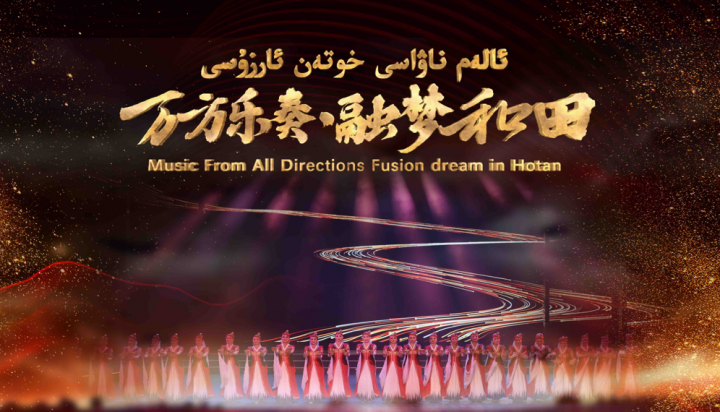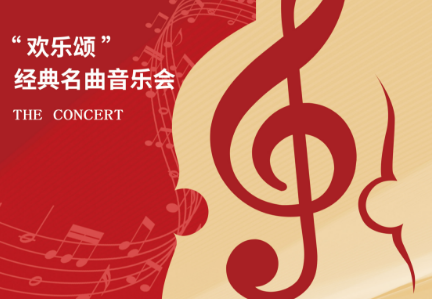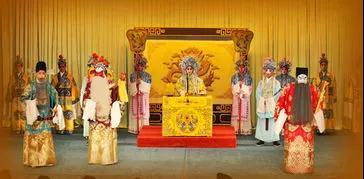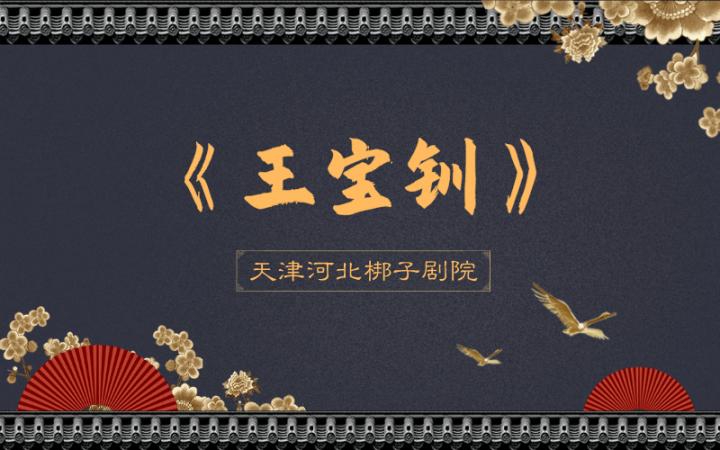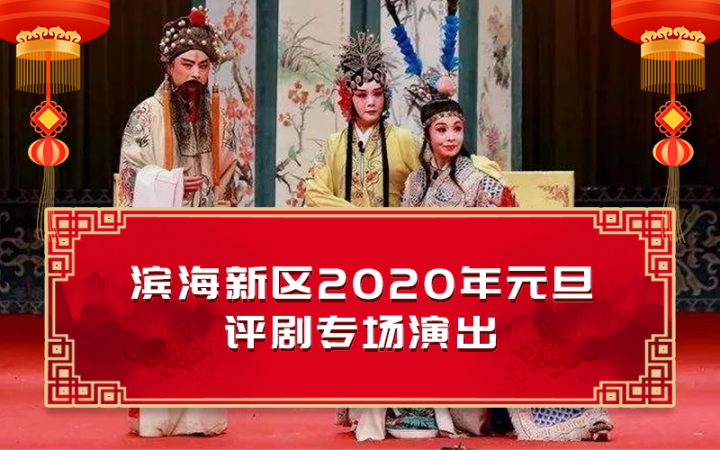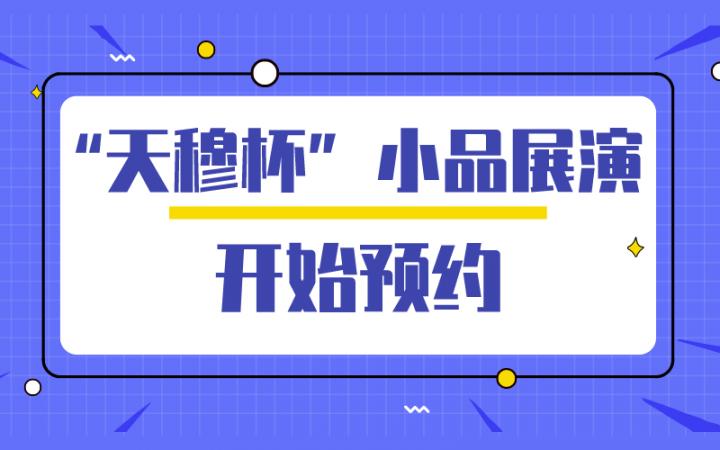

继去年十一月首次巡演京港之后,天津茱莉亚管弦乐团将再次走出校园,于4月28日登台北京国家大剧院,参演“进乐新篇”第九届中国交响乐之春。
届时,乐团将由驻团指挥林敬基(Ken Lam)执棒,演出美国当代作曲家韦恩·欧奎恩(Wayne Oquin)的《塔翔》,并与学院两位常驻教师——小提琴家李伟纲和中提琴家李宏刚携手演绎莫扎特的《降E大调交响协奏曲,K. 364》,下半场乐团则将与多位管乐和打击乐常驻教师“并肩合作”呈现斯特拉文斯基的《春之祭》。作为本乐季的收官演出,天津茱莉亚管弦乐团也将于4月27日在天津茱莉亚音乐厅呈现同一套曲目。
4月28日在国家大剧院的音乐会,请点击下图进入“国家大剧院智慧管家”小程序进行购票;4月27日在天津茱莉亚学院的音乐会,请扫描文末的二维码进行购票。
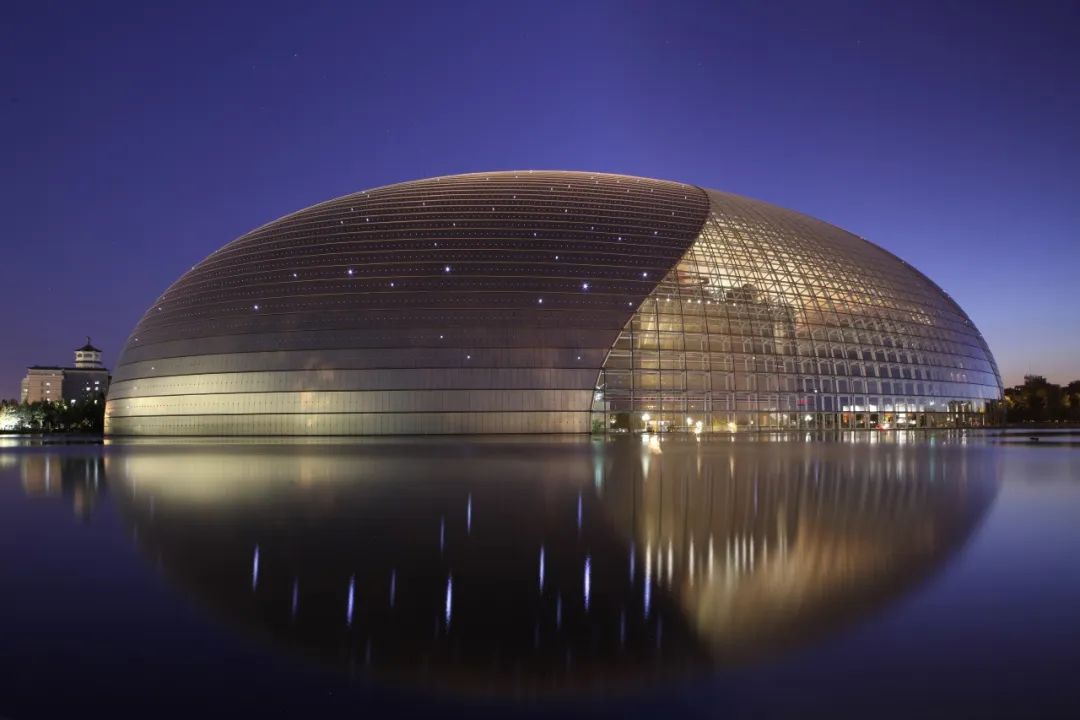
天津茱莉亚管弦乐团音乐会
TIANJIN JUILLIARD ORCHESTRA CONCERT
林敬基,指挥
李伟纲,小提琴
李宏刚,中提琴
Ken Lam, Conductor
Weigang Li, Violin
Honggang Li, Viola
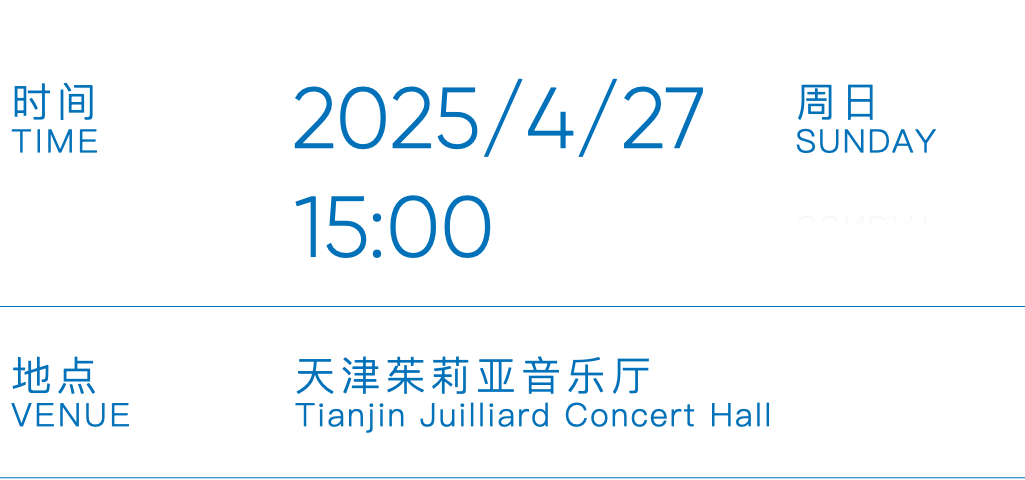
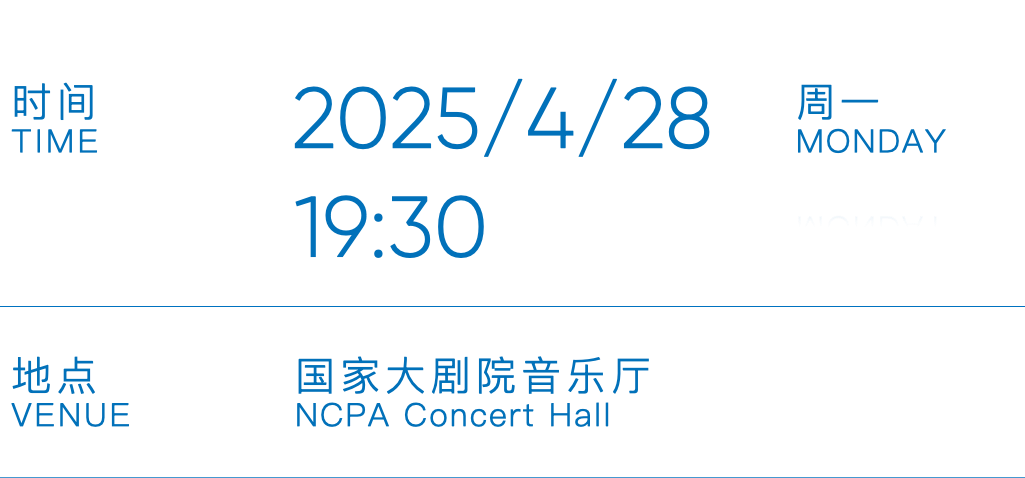
演出曲目
PROGRAM
韦恩·欧奎恩(b. 1977)
《塔翔》,为乐队而作(2021)
WAYNE OQUIN (b. 1977)
Tower Ascendingfor Orchestra (2021)
沃尔夫冈·阿玛多伊斯·莫扎特(1756-1791)
降E大调交响协奏曲——为小提琴、中提琴与管弦乐团而作,K. 364
李伟纲*,小提琴
李宏刚*,中提琴
WOLFGANG AMADEUS MOZART (1756-1791)
Sinfonia Concertante for Violin, Viola and Orchestra in E-flat Major, K. 364
Weigang Li*, Violin
Honggang Li*, Viola
中场休息
INTERMISSION
伊戈尔·斯特拉文斯基(1882-1971)
《春之祭》
IGOR STRAVINSKY (1882-1971)
The Rite of Spring
*天津茱莉亚常驻教师|Tianjin Juilliard Resident Faculty
本场演出曲目以现场演奏为准
The program is subject to change
韦恩·欧奎恩
《塔翔》,为乐队而作(2021)
WAYNE OQUIN
Tower Ascendingfor Orchestra (2021)
数个世纪以来,全球文明无不将建筑高度视为其精神象征的重要标尺。雅典帕特农神庙的恢弘立柱、罗马斗兽场的巍峨弧壁、埃及金字塔的锥形天阶、法兰西哥特式教堂的尖顶飞扶壁,以及中式宝塔的层叠飞檐,皆是人类文明向苍穹延伸的历史见证。
在曼哈顿居住的二十二年间,我几乎每日目睹钢铁脚手架在这座垂直城市中生长。这种渐进、持续且时常伴随金属轰鸣的建设进程,连同人类向上攀登的永恒渴望,共同构成了2008年受佐治亚大学委托创作都市主题管乐作品时的核心意象。《塔翔》由此诞生,并成为我演出频率最高的作品之一。
2019年秋,当太平洋交响乐团音乐总监卡尔·圣克莱尔提出改编管弦乐版本的构想时,我欣然应允。这不仅源于此前与该乐团合作的珍贵经历,更因卡尔独具慧眼— —他率先洞察了这部作品交响化的潜在可能。
改编作品如同建筑结构的重塑。新增的弦乐声部绝非简单叠加,交响乐团与管乐团的创作逻辑存在本质差异,迫使我在保留原作框架(包括小节数等核心参数)的同时,赋予音乐新的生长轨迹。
开篇小号独奏以庄重姿态呈现四音动机。

这个四音动机犹如建筑的地基石,逐步衍生出复杂的和声网络。即便在充满半音冲突的戏剧化高潮中,每个和弦仍暗含原始四音基因的密码。

全曲可视为持续渐强的声学建筑。如同摩天大楼逐层叠加的钢结构,音乐通过音域攀升、节奏加速、和声密度递增等手法构建声浪。这部八分钟作品采用经典的快慢二分结构,各段落均以延展的单簧管独奏作为顶点。
在创作过程中,若要我只说出脑海中某一座特定的高楼,那可真难倒我了。在改编这部作品时,我重读了尼尔· 巴斯康姆的《凌云志》,书中记述了帝国大厦与克莱斯勒大厦之间具有历史意义的竞争。这两座大厦都建于20世纪20年代末,当时都在竞相成为世界最高建筑。(尼尔·巴斯康姆《凌云志:一场历史性的摩天大楼竞赛与一座城市的崛起》,纽约:双日出版社,2003年。)当然,自由塔及其所代表的纽约精神,至今仍在激励着我。但比起任何一座特定建筑的风格和特色,我最想传达的是一种象征性的力量,一种追求成就的动力。
1930年6月,沃尔特·克莱斯勒在其装饰艺术杰作落成之际写道:“今日摩天楼或将倾颓如往昔,但凝结其中的人类协作精神必将催生新筑。其形制或巨或微,然高楼所寓之精神乃生生不息。正如当今建筑远胜往昔,未来之构筑亦必有精进。”(沃尔特·克莱斯勒《摩天大楼与金字塔》,1930年6月《美国退伍军人协会月刊》第4页。)
在《塔翔》中,我力图调动交响乐团从呢喃私语到雷霆万钧的全部表现力,铸就一道永不停歇的乐观之声,直至终章和弦如天际线般傲然定格。
题献
谨以此作献给茱莉亚学院第六任院长约瑟夫·W·波利希博士。在其长达三十四年的治校生涯中,波利希博士不仅延续威廉·舒曼的治学理念,更开创性地建设学生公寓、主持校园改造、建立天津分院、创立爵士乐与历史演奏专业、设立戏剧艺术硕士、重构博士培养体系,并著有三部专著。
他对表演艺术人文价值的深刻认知,及其在艺术、政治与教育领域的卓越领导力,使我受益终身。
首演信息
管弦乐版《塔翔》由太平洋交响乐团委约创作,音乐总监卡尔·圣克莱尔执棒,于2021年9月30日至10月2日在加州橙郡塞格斯特罗姆音乐厅完成全球首演。此次演出标志着该乐团因疫情中断近两年后的艺术重生,为2021-2022乐季揭开序幕。
For centuries, cultures the world over have measured their significance in part by the height of their architecture. The Parthenon in Athens, the Colosseum in Rome, Egyptian pyramids, French cathedrals, and Chinese pagodas are only a few instances of civilizations reaching to the skies.
For the twenty-two years I've lived in Manhattan, I have witnessed the steel scaffolding of a high-rise construction somewhere in the city almost daily. This process—gradual, continuous, at times loud and clangorous—and the symbolism of human upward aspiration were both in my mind in 2008 when The University of Georgia commissioned me to write a new concert band piece on an urban theme.Tower Ascendingwould become one of my most frequently performed works.
When Carl St. Clair wrote me in the fall of 2019 to propose an orchestral arrangement for the Pacific Symphony, I accepted immediately, not only because I had previously had such a positive experience working with this orchestra, but also because of Carl's vision. It was Carl who first imagined what an orchestral version ofTower Ascendingcould be.
Whenever I arrange one of my pieces for other instruments, the music takes unexpected turns. Once a new color is added, it affects everything already there. WithTower, I could not merelyadd strings. The compositional possibilities of an orchestra differ from those of a symphonic band to such an extent that I had to allow this music to go its own way, without feeling constrained by every detail of its predecessor. Yet, all of the major features of the original band version, even the number of bars, remain here.
The opening trumpet solo, solemn and stately, is constructed of just four notes.

Though other pitches are gradually added, this four-note collection becomes the harmonic and melodic foundation of the work: slowly intensifying, eventually leading the listener into highly dissonant regions with no allegiance to any single key center. But even in climactic moments of intense chromaticism, every chord reflects the original four-note motive.

The work can be heard as one long crescendo. As a skyscraper is built beam upon beam, floor upon floor, so, too, is this music cumulative, layering successive measures and phrases, rising in register and intensity, accelerating in tempo and harmonic rhythm, gradually growing in dissonance. The eight-minute piece is divided evenly into two parts, slow and fast, each culminating in an extended clarinet solo.
I would be hard pressed to name only one particular high rise I had in mind during my composing. As I made this arrangement I reread Neal Bascomb’sHigher, chronicling the historic rivalry between the Empire State Building and the Chrysler Building, both constructed in the late 1920s, both vying to be then the world’s tallest.(Neal Bascomb, Higher: A Historic Race to the Sky and the Making of a City (New York: Doubleday, 2003).)Certainly the Freedom Tower and all it represents for New York continues to inspire. But more than the style and features of any one particular structure, it is a symbolic strength, a drive for achievement, that I most want to convey.
In June 1930, shortly after the completion of his monumental art deco building at 42nd and Lexington, Walter Chrysler wrote:
“Our present skyscrapers may be torn down, as others have been before them. But the spirit of men working together that they represent will build new ones. In point of size or height they may be greater, or they may be lesser. But what skyscrapers represent, and what has brought them into being, is a growing thing. And just as the skyscrapers of today are more impressive and adequate than those of yesterday, so surely will those of tomorrow be superior in some important ways. They will be better ones.”(Walter Chrysler, “Skyscrapers and Pyramids,” The American Legion Monthly (June 1930): 4.)
I’ve attempted to use the orchestra to its fullest—from quiet whisper to deafening roar—to create a sound relentless in optimism, pushing forward until the final chord.
Tower Ascendingis dedicated to Dr. Joseph W. Polisi, sixth President of The Juilliard School. During his thirty-four-year presidency, Joseph brought Juilliard to new heights. Extending many of the ideals of his predecessor, William Schuman, Joseph built the school’s residence hall, led a dramatic redesign of the school’s main building, founded a branch campus in Tianjin, China, instituted Juilliard’s Jazz and Historical Performance programs, created a Master of Fine Arts in Drama, reconceived the school’s doctoral program, was awarded ten honorary doctorates in his own right, authored three books, exponentially multiplied the Juilliard endowment, and taught his own course—American Society and the Arts. He retired in 2018. Beyond the gratitude I have to him for his having appointed me to my current position is a genuine admiration for his leadership and advocacy for the performing arts and their pivotal role in humanity, politics, and education.
Tower Ascendingfor orchestra was commissioned by the Pacific Symphony, Carl St.Clair, music director. It was premiered September 30 through October 2, 2021, in Segerstrom Hall, Orange County, California. This work opened the Pacific Symphony’s 2021–2022 season, after a nearly two-year hiatus because of COVID-19.
中文版由职承翻译
English version by Dr. Wayne Oquin
沃尔夫冈·阿玛多伊斯·莫扎特
降E大调交响协奏曲——为小提琴、中提琴与管弦乐团而作,K. 364
WOLFGANG AMADEUS MOZART
Sinfonia Concertante for Violin, Viola and Orchestra in E-flat Major, K. 364
降E大调小提琴与中提琴交响协奏曲在莫扎特去世十年后出版,是一部令人神往却充满谜团的作品。它手稿失传,相关记载稀少,我们只能从莫扎特生平中探寻其创作背景。然而,作品凭借独特魅力,像莫扎特本人一样乐观且纯粹,引领听者进入音乐的至境。
1777年,21岁的莫扎特不甘被萨尔茨堡大主教科洛雷多轻视,踏上为期两年的求职之旅,前往曼海姆和巴黎。尽管年少成名,可这趟旅程并不顺遂:不仅求职失败,母亲还在途中病逝,又遭父亲指责,莫扎特陷入人生困境。
回到萨尔茨堡,莫扎特仍未得到大主教的赏识。但在曼海姆和巴黎接触到的新鲜音乐形式,激发了他的创作灵感,促成了这部交响协奏曲的诞生。交响协奏曲这一形式从巴洛克大协奏曲演变而来,由两个或更多的独奏乐器与乐团互动。虽有着鲜明的对比和独奏的华丽片段,交响协奏曲与独奏协奏曲仍存在着区别。另外,莫扎特对中提琴情有独钟,为让中提琴的浑厚和小提琴的华丽适配,特意将中提琴调高半度,使得琴弦张力更加紧绷,让音色更明亮。
全曲分为三个乐章,第一乐章是庄严的快板。在弦乐、圆号与双簧管的铺垫下,小提琴与中提琴默契切入,如智者对谈。第二乐章,采用C小调,小提琴的高贵与中提琴的深沉在一遍遍真挚的倾诉中,道尽作曲家心中无限的冷暖。第三乐章为急板,两个生灵挣脱束缚,圆号与双簧管奏响远方的召唤。两把飞舞的弓子,带领着乐团驰骋在被欢乐与希望的阳光沐浴的自由世界中。
Mozart's Sinfonia Concertante in E-flat Major, K. 364, for solo violin and viola with orchestra, was composed in 1779. At the time, Mozart and was serving as the conductor of the Salzburg Court Orchestra, and the piece was written for the members of that ensemble. The sinfonia concertante is a type of concerto for multiple solo instruments that became popular in the late Baroque period, and was especially favored in Paris, London, and Mannheim. It can be described as combining elements of the Baroque concerto grosso, the Classical solo concerto, and the small orchestral symphonies of that time. Mozart composed two such works around this time: this one and another for two pianos (K.365). In 1779, Mozart was struggling to find a job, and the heartbreak of a lost love and the death of his mother caused the 23-year-old young man to grow up quickly. His Sinfonia Concertante is one of the few works of this early period that does not feel entirely light-hearted. Compared to the other lively concertos of the period, it has a more rigorous structure, showcasing mature musical thought. In this work Mozart also enhanced the role of the orchestra. It is no longer simply a tutti group that competes with the soloists as in a Baroque concerto grosso, and neither does it serve a mere supporting function as in a Classical solo concerto. Rather, the orchestra plays a prominent role throughout, resulting in deeper musical expression. Additionally, Mozart divided the violas into two parts, a technique popular in 18th-century French music, allowing for richer harmony and enhanced polyphonic structure.
The first movement allegro begins with a majestic orchestral exposition. The strings’ opening gesture is unusually stern for early Mozart. In the next passage, the orchestra starts softly and gradually builds tension, a gesture that likely reflects Mozart's experiences in Mannheim, whose orchestra was famous for this effect. The soloists’ entrance introduces yet a new theme, played in octaves by the violin and viola. The elegant secondary theme is first performed by the violin, then the viola, leading to a competitive imitation that merges into a duet. While cadenzas at the time were usually improvised by the performers, because of the multiple soloists in this work the cadenzas which close both the first and second movements were written out in full by Mozart.
The second movement, Andante, moves to C minor. This key gives the movement a dark and sombre color, contrasting sharply with the first movement. It is filled with reserved elegance and a lyrical quality, both noble and simple. The soloists are prominent, while the orchestra mainly provides accompaniment, although the writing is no less rich. In the first movement, the violin and viola solos were essentially competitive in nature, whereas in this movement, they instead hold a heartfelt conversation. In the cadenza, the lyrical theme from the beginning of the movement is presented in an even more forlorn and poignant restatement for the duet alone.
The third movement, Presto, evokes the joyful celebration of an operatic finale. The solo violin and viola enter a good-natured competition of virtuosity and imitation. The main theme appears four times, confirming the movement’s rondo nature despite its complexity, while the secondary theme again takes the form of a duet. Next comes a brief but varied development section, after which the second theme returns in the tonic key, a holdover from sonata form structure. Finally, the first theme appears yet again, leading to a brilliant conclusion.
中文版由职承撰写
English version byHo Chung Chan
MM ’26,violin, Instrumental and Orchestral Studies
伊戈尔·斯特拉文斯基
《春之祭》
IGOR STRAVINSKY
The Rite of Spring
正如近代物理学重塑时空概念,音乐与绘画、建筑一样,经历了颠覆性变革。在音乐史上,俄罗斯作曲家伊戈尔·斯特拉文斯基创作的《春之祭》,精准标志着一个时代的开端。这部作品兼具芭蕾舞剧和管弦乐音乐会作品的属性,描绘古老献祭仪式。
尽管斯特拉文斯基早年受里姆斯基-科萨科夫、德彪西和拉威尔的影响,但凭借“自我主义”理念,他在《春之祭》的概念、节奏、音高与形式上实现了前所未有的革新。
1913年5月29日,《春之祭》在巴黎香榭丽舍剧院首演,吸引巴黎顶尖艺术家与名流到场。开场,巴松管在高音域奏响俄罗斯原始旋律,独特音色引发观众疑惑。紧接着,英国管、单簧管等乐器相继加入,营造出神秘氛围。大幕拉开,弦乐拨出怪异固定音型,舞台上,舞者们身着奇装异服,弓背内八,梳长辫的少女尤为瞩目。迅猛音块与不规则重音袭来,少女们随之急促跳动。
“这简直就是侮辱!”演出过程中,观众难以理解,嘘声、呐喊此起彼伏。斯特拉文斯基愤怒起身,快步走向后台,观众的吵闹声此时已盖过音乐。编舞尼金斯基站在椅子上向舞者高喊指令,老板佳吉列夫拉开场灯,试图平息骚乱。然而,斯特拉文斯基心中的音乐信念坚定:定音鼓擂响,“大地之舞”震撼奏响。在低音提琴的衬托下,铜管轰鸣,中提琴、圆号、小号和小提琴音符层层叠加,随后节奏张力崩塌。很快,舞台陷入黑暗,惨白聚光灯照亮中央,一位舞者剧烈痉挛。这场神秘仪式,献祭的不仅是少女躯体,更是人们曾经笃信的传统理念。
The 1913 premiere ofThe Rite of Springat the Théâtre des Champs-Élysées in Paris triggered one of the most infamous scandals in music history. Not only did the music challenge the audience’s sensibilities, Nijinsky’s primitively grotesque choreography also assaulted their visual expectations. After a while, the audience made so much noise the music itself was no longer heard. Defying tradition in every respect, the work drew widespread criticism but was also recognized as a canonical masterpiece within a few decades of its composition, at least in the concert hall. Although Stravinsky’s career continued for decades to come, it would remain his most iconic work. The composer later remarked: “There is no ‘tradition’ inThe Rite of Spring—only the direct expression of elemental force.” Stravinsky, however, was famously manipulative in his public statements, and researchers have slowly uncovered the work’s debt to folk music and the techniques Stravinsky inherited from his Russian musical upbringing. Nevertheless, it is undeniable thatThe Rite of Springwas utterly novel, and in it Stravinsky shattered the prevailing aesthetic norms of the Late Romantic era in ways that almost no 20th century composer remained untouched by. In his later years, he remarked: “It opened a door for others to explore rhythm and harmony beyond inherited rules.”
The Rite of Springis divided into two main parts—Adoration of the Earth and The Sacrifice—depicting a primitive Slavic ritual in which a young girl is sacrificed to spring as the season approaches.
Adoration of the Earthis divided into eight sections. The introduction unfolds with the iconic bassoon solo, played in an unusually high register to create a special color. Gradually, woodwind instruments join in, evoking the vitality and restlessness of nature’s rebirth as spring approaches. After a fleeting moment of silence, the bassoon solo reemerges. Next, the string section enters playing pizzicato, punctuating the texture with a simple rhythmic motif that links to the next section.
The Augurs of Spring - Dances of Young Girls: Stravinsky propels the music into a relentless ritual dance. He elevates rhythm to the forefront, marginalizing melody and harmony to let pulsating patterns dominate. Through irregular accents and abrupt dynamic shifts, the score conjures a primal, feral dance—an embodiment of raw, untamed energy.
Ritual of Abduction - Spring Rounds - Ritual of the Rival Tribes: TheRitual of Abductionbegins with strings hovering, intertwining with circling woodwinds. Timpani thuds and blaring brass chords ignite a turbulent dance. Relentless eighth-note clusters in shifting meters propel primal momentum. A flute introduces theSpring Roundswith a soft trill, soon joined by strings articulating heavy, deliberate steps. Above this foundation, Stravinsky layers a Lithuanian folk-inspired melody, one of several in the work, carried by the bassoon and oboe in a sweet, singing tone. Percussion erupts like spring thunder—sudden forte strings and frantic piccolo runs—before staccato steps conclude this section, launching a frenetic chase. A brief clarinet interlude offers respite, then tension escalates again: two tribes confront each other. Strings advance in polyrhythmic patterns, underscored by brass fanfares. Finally, trombone and tubas roar in unison, evoking massive prehistoric beasts charging forward. This also prefigures the thematic identity of the next section, which is akin to a sage emerging with measured resolve amidst the swirling chaos.
Procession of the Sage - The Sage: Amidst the tumult and clamor, the sage finally steps forward—and in an instant, chaos dissolves, the music falling suddenly into silence.
Dance of the Earth: A new frenetic, breakneck dance erupts, driven by staccato trumpet bursts. The textures tighten relentlessly, layering urgency upon urgency—until it all snaps shut on a jarring dissonant chord, abruptly concluding the ballet’s first act.
The Sacrificeis divided into six sections. The introduction emerges mysteriously: string harmonics shimmer like distant nocturnal cries, met by a lone trumpet—their dialogue spins an airy, spectral soundscape.
Mystic Circles of the Girls: The girls’ dance begins—one among them is marked as the sacrificial chosen one. Strings tremble with tremolos, weaving a tapestry of unease. The melody flickers between instruments, until the orchestra erupts into eleven thunderous strikes of primal dissonance, a ritualistic, unfeeling pounding heralding the inevitable.
Glorification of the Chosen One: The crowd exalts the chosen maiden, her fate sealed. Jagged rhythms and brutal brass interjections coalesce into a visceral display, portraying the raw ferocity of a primal sacrificial rite.
Evocation of the Ancestors - Ritual Action of the Ancestors: Brass fanfares blaze forth, summoning ancestral witnesses to the sacrifice, while strings hold sustained tones like distant, primordial echoes. The next ritual unfolds, tambourine and timpani propel an erratic pulse, guiding the English horn’s sinuous melody. Woodwinds coil with serpentine lines, their chilling detachment shattered when brass erupts in jagged interjections—cacophonous percussion and shrieking strings escalate into a ruthless frenzy. Finally, the clarinet threads the melodic line upward, its gradual unfurling a spectral lament, as if ancestral spirits have reawakened in the ether.
Sacrificial Dance (The Chosen One): The final ritual begins: the chosen maiden dances toward her death. Constant shifts of meter mirror the dance’s unraveling logic—chaotic, delirious, yet laced with perverse devotion, those irregular accents mimicking the sacrificial victim's involuntary pauses when exhausted, yet compelled persistence in the frenetic dance. She dances on until the last second before she falls, whereupon she is abruptly seized and lifted skyward as an offering suspended between heaven and earth.
中文版由职承撰写
English version byXinyu Zhao
MM ’26, cello,Instrumental and Chamber Music Studies
林敬基
KEN LAM
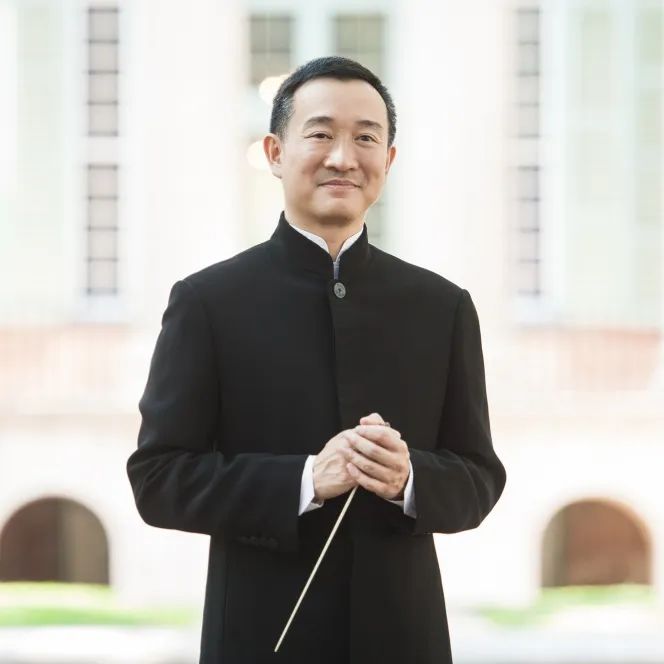
向上滑动阅览
SCROLL UP TO READ
李伟纲
WEIGANG LI
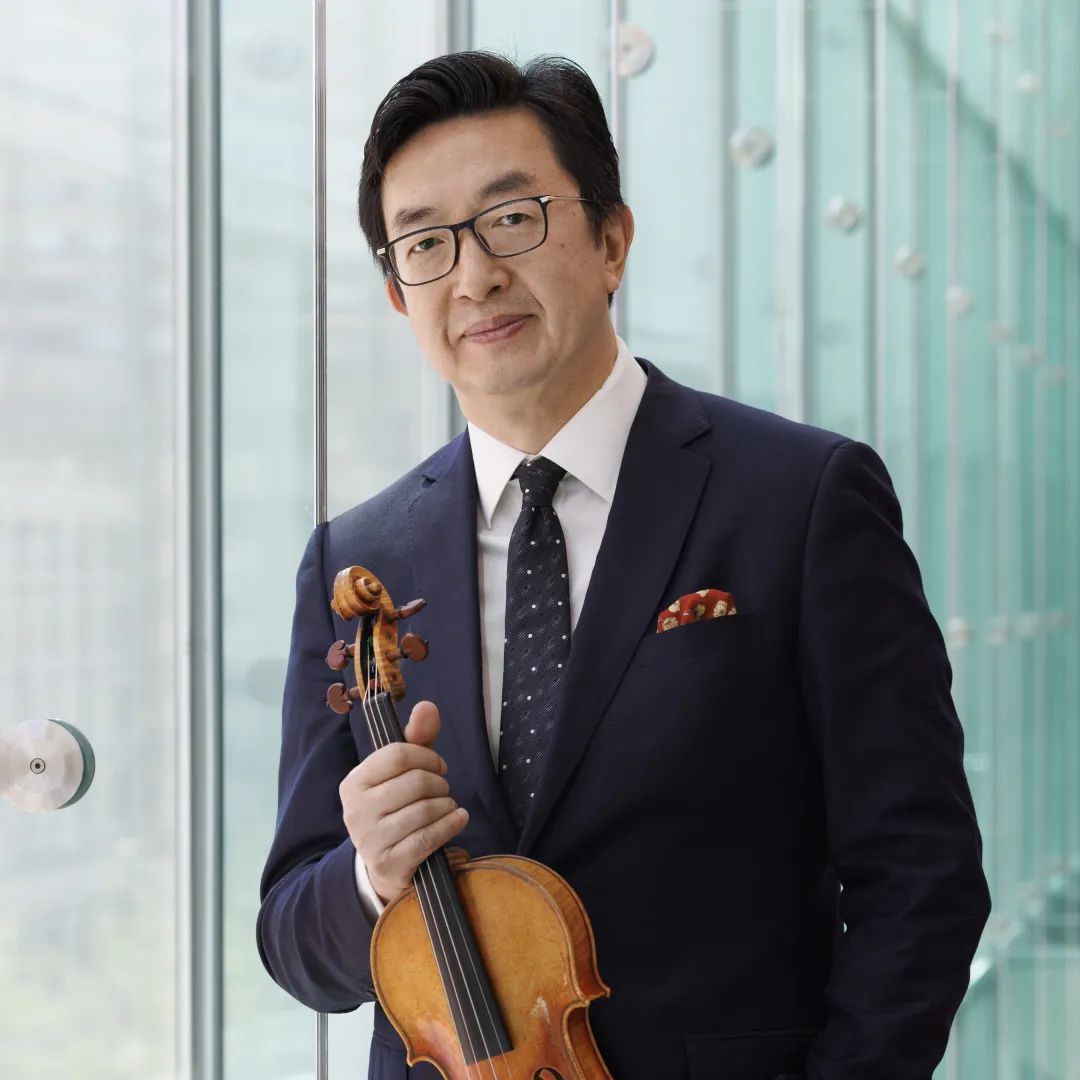
向上滑动阅览
SCROLL UP TO READ
李宏刚
HONGGANG LI
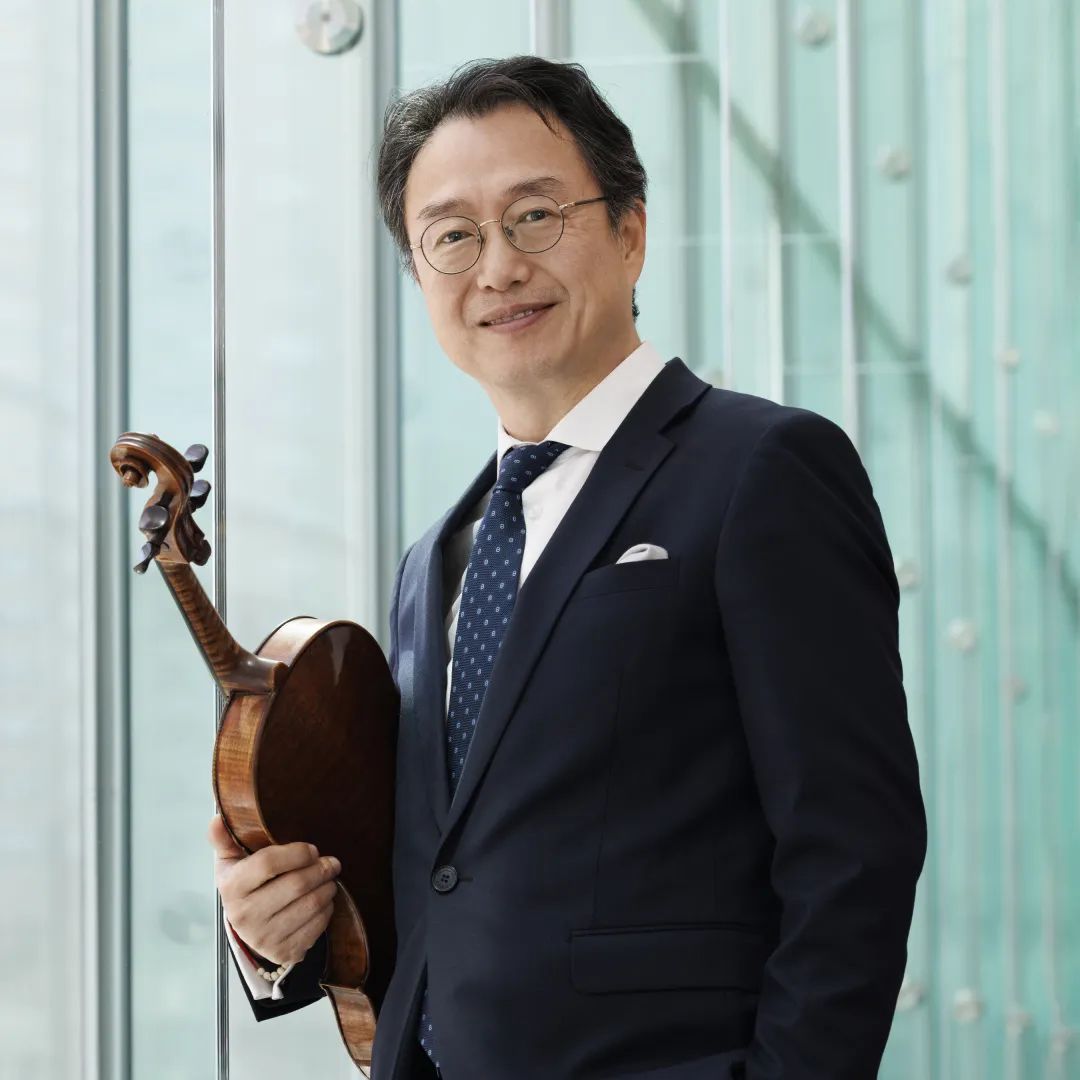
向上滑动阅览
SCROLL UP TO READ
天津茱莉亚管弦乐团
TIANJIN JUILLIARD ORCHESTRA
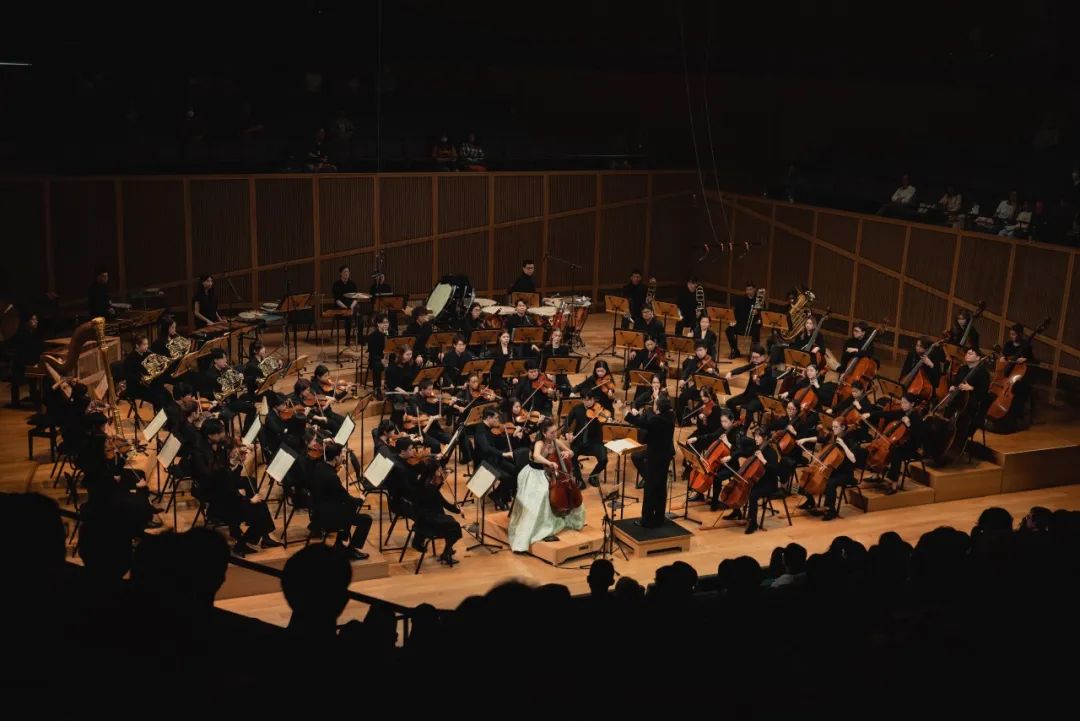
天津茱莉亚管弦乐团在每个音乐季中献上约十场音乐会。从巴洛克时期曲目到当代作品,天津茱莉亚管弦乐团会为我们带来风格丰富的演绎,其中也包含了与中国传统乐器合作演奏的佳作。常驻教师与客座教师将指导乐队声部排练,并与他们一同练习和演出。在驻团指挥带领的音乐会之外,乐团还曾与多位著名的客座指挥合作。
The Tianjin Juilliard Orchestra presents up to 10 concerts each season, performing a diverse repertoire ranging from baroque to contemporary orchestral works, as well as pieces using traditional Chinese instruments. Resident faculty and visiting artists lead discussions, coach sectionals, and play side-by-side with students in rehearsals and performances. In addition to concerts led by the resident conductor, in recent seasons the orchestra also works with renowned guest conductors.


来源:天津茱莉亚学院


 首页
首页 文章
文章

